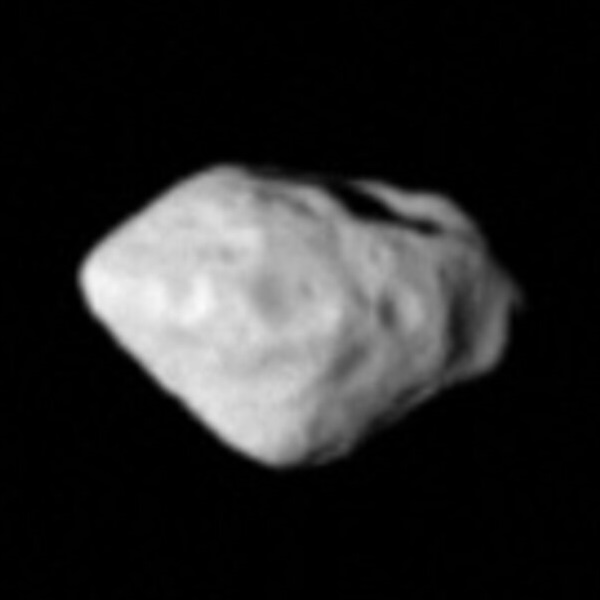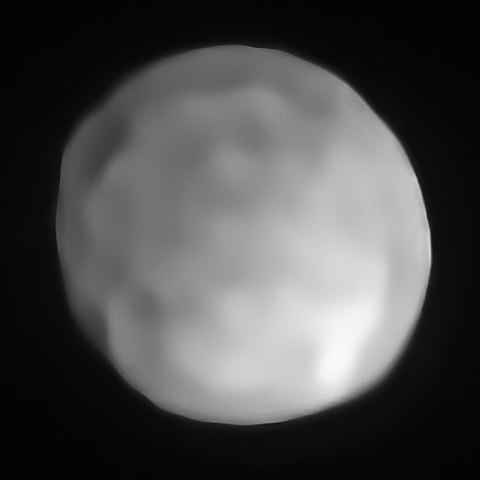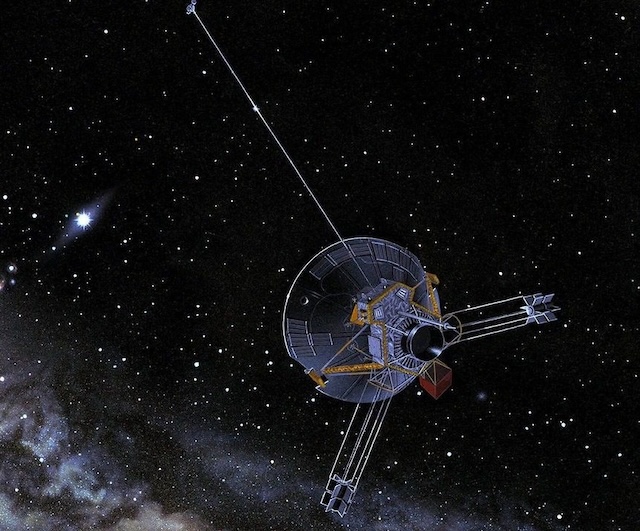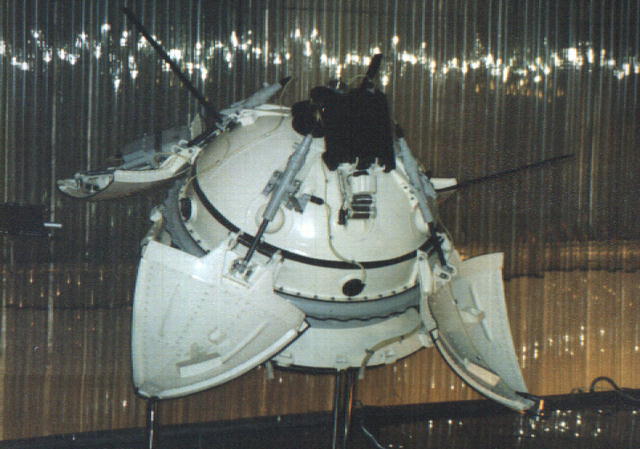1 day / second
0.5 AU
4179 Toutatis
Asteroid
A large, elongated, and irregularly shaped asteroid that tumbles chaotically through space while making frequent close approaches to Earth, notable for its complex rotation and unusual peanut-like shape.
Key Facts
orbital regime | Inner System |
learn more | Wikipedia |
mass | 1.9000e+13 kg |
radius | 1.225 km |
hill radius | 206.879 km |
semi-major axis | 2.532 AU |
eccentricity | 0.629 |
inclination | 0.446º |
longitude of the ascending node | 124.3º |
argument of periapsis | 278.75º |
orbital period | 4.029 years |
discovery date | January 4, 1989 |
discovered by | Christian Pollas at Côte d'Azur Observatory, Caussols |
name origins | Named after Teutates, a Celtic god |
dimensions | 5.4 kilometers in diameter |
material composition | S-type asteroid |
density | 2.1 g/cm³ |
albedo | 0.13 |
Spacecraft Visits
Chang'e 2
Flyby
Launched in 2010, visited in 2012
Chang'e 2 completed a close flyby of asteroid Toutatis on December 13, 2012, capturing detailed images from just 3.2 kilometers away while traveling at a relative speed of 10.73 kilometers per second.










